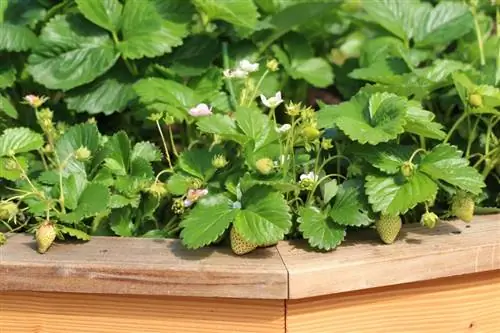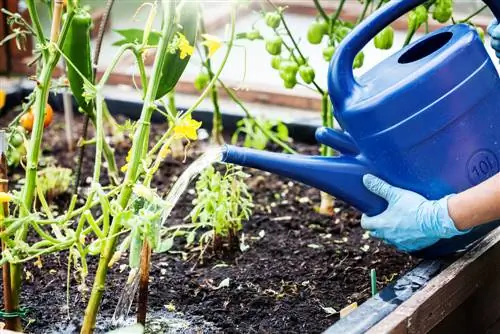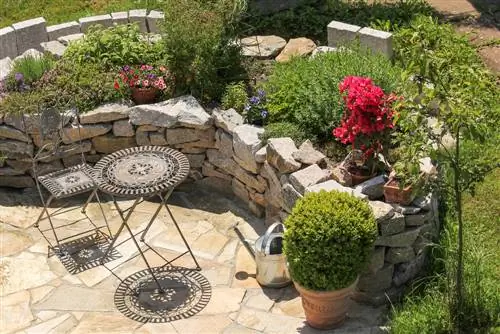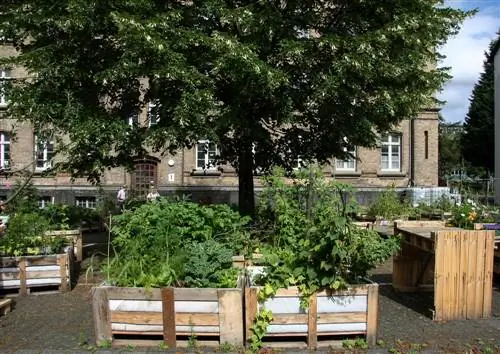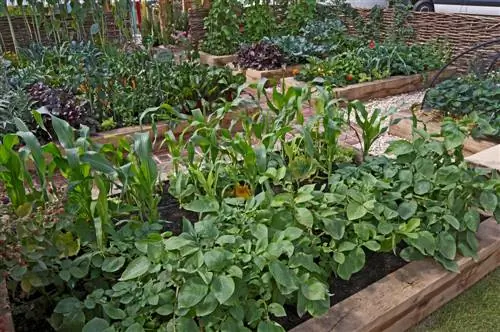- Author admin [email protected].
- Public 2023-12-16 16:46.
- Last modified 2025-01-23 11:19.
A raised bed scores points for growing strawberries with numerous advantages, such as back-friendly care and a significantly higher harvest yield compared to flat beds. Follow our practical guide to proper planting here.
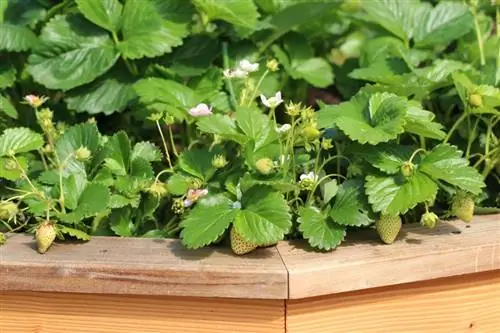
How do I plant strawberries in a raised bed?
Planting strawberries in a raised bed: Fill the bed in layers with drainage, clippings, leaves, green waste and a mixture of compost and soil. Plant the strawberries at the appropriate distance and care for them with regular watering and mulching.
Layer by layer for the perfect potting soil
One of the special attributes of a raised bed is the flexibility in putting together the filling. While the options for improving the soil in flat beds are limited, the soil in raised beds is specifically composed to meet the requirements of heavy-feeding strawberry plants. Experienced raised bed gardeners advocate this layering:
- First layer: Drainage made of inorganic materials, such as pottery shards or gravel, thinly covered with topsoil
- Second layer: clippings from hedges and trees, such as branches, twigs or small pieces of roots, mixed with soil
- Third layer: leaves and green waste with garden soil
- Fourth layer: Mixture of compost, topsoil, sand, vegetable soil and rotted manure
The raised bed should be filled at least four weeks before the planting date so that the materials can settle.
Planting the raised bed with strawberries
On the chosen planting date in July/August or March/April, the soil in the raised bed is thoroughly loosened again. How to plant strawberries correctly:
- Put the root ball in water or diluted horsetail broth for an hour
- Dig a planting hole with 1.5 times the volume of the root ball
- plant the strawberry plant so deep that the heart bud is just above the surface of the soil
- position bare-rooted young plants vertically without bending the roots
- water generously and mulch with bark mulch, pine needles or straw
The perfect planting distance depends on the variety. Weak-growing strawberries are content with a distance of 20 centimeters, while strong-growing plants should maintain a distance of 30 centimeters. In a mixed culture, an even greater distance is recommended if the neighboring plants cast shadows. 40 to 60 centimeters have proven to be a good row spacing.
Tips & Tricks
Very few hobby gardeners create a raised bed exclusively for growing strawberries. Since the plants get along excellently with a variety of neighbors, there is nothing wrong with a balanced mixed culture. Lettuce, leek, spinach, parsley and onions are recommended. Marigolds, marigolds and lilies of the valley are something to look forward to.

